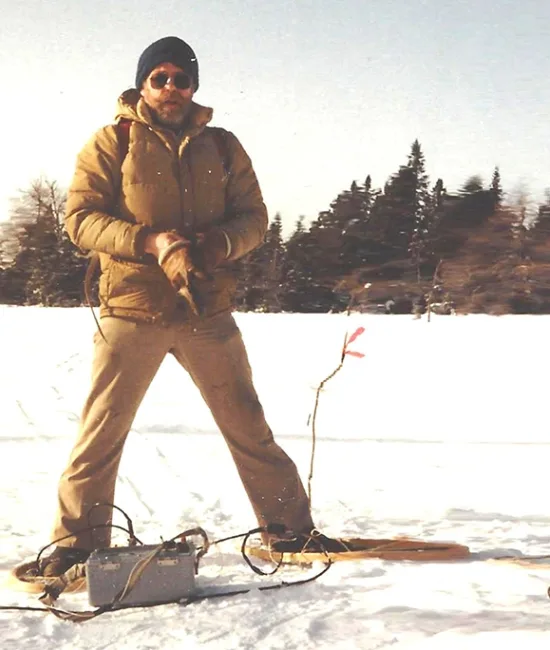William Scott
How did you get your start in the mineral industry?
I spent my early summers at a family cottage in northern Ontario, and developed a love of the bush. From high school, I entered Engineering Physics at UofT, aiming at the geophysics option, which seemed to be the only one not leading to a laboratory job. My first summer job was with Huntec, working for Norman Paterson. That job sold me on the attraction of the geophysical life. I worked for Norm for the next two summers, and have never looked back. In 4th year, I developed an interest in the nature of the IP effect, and went on to do an MA at UofT with Gordon West on non-linear IP, and a PhD at McGill on phase angle IP with Murray Telford. Subsequently I worked at the GSC using geophysics to map geology and permafrost, first in Atlantic Canada, and then in the Western Arctic. Then I joined Hardy Associates in Calgary to form a group offering engineering and subsequently mineral exploration geophysics. Following that, I moved to C-CORE at Memorial University in Newfoundland, working on mapping shallow marine mineral deposits. Finally I partnered with my geologist wife in operating GeoScott Exploration Consultants, operating throughout Atlantic Canada. I never really had a life plan, but followed interesting opportunities as they arose. I have had a wonderful life in the industry, and, were I to do it all again, I would change nothing. My wife and I retired to Barrie, where now I build and restore wooden boats.
What has been the most memorable experience of your career?
When I worked at the Geological Survey of Canada (GSC), I was involved with the Projeto Geofísico Brasil Canadá. This project was established by the Canadian International Development Agency (CIDA) with the Department of Mines and Energy of Brazil. It involved an appraisal of mineral resources in part of central Brazil, through airborne and ground geophysical surveys. The work was carried out by Canadian geophysical contractors under supervision of the GSC. The project was designed also to provide technical training to Brazilian personnel. One of the more interesting aspects was that Brazilian geophysicists were given the chance to gain experience by working with Canadian crews working in the Canadian north. During the life of the Projeto, I had Brazilian geophysicists working with me on geophysical surveys in the Western Arctic. Subsequently, I went to Brazil to work with them on their ground geophysical programs. On my first visit, in the winter of 1978(?), I left Tuktoyaktuk, where the temperature was -35C, and flew to Ottawa via Edmonton. A day later, I left Ottawa, arrived in Rio de Janeiro and went on to Goiania, where the temperature was +45C. On the third day I was in the field with the Brazilian crew. Driving back to the field camp, we stopped at a store in a small village. In anticipation of our arrival, beer had been placed in a freezer. Nothing in my life has ever tasted as good as that ice-cold beer at the end of that first field day.
